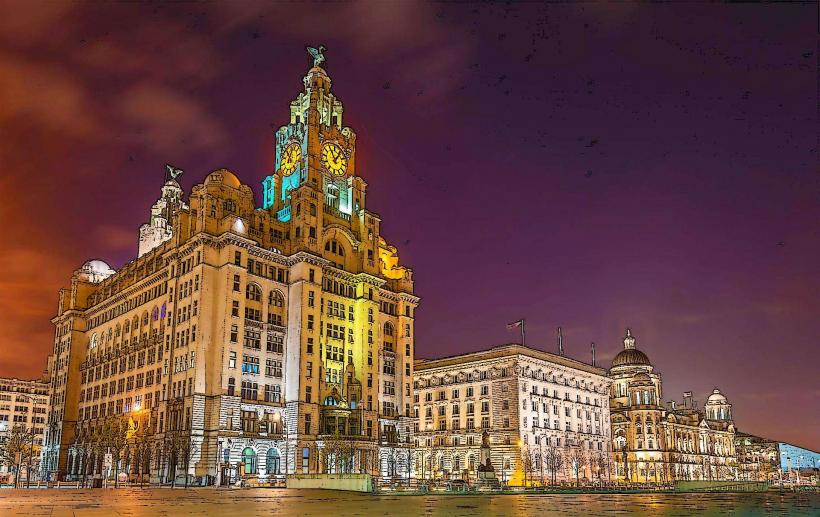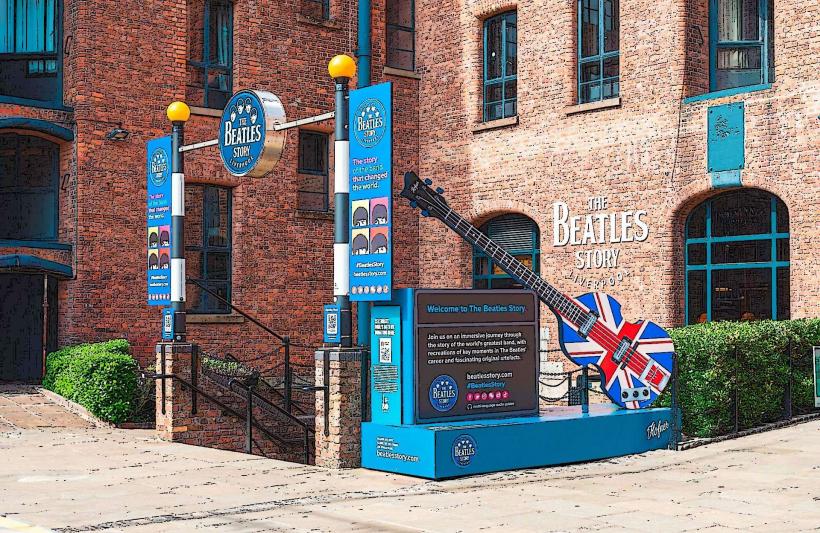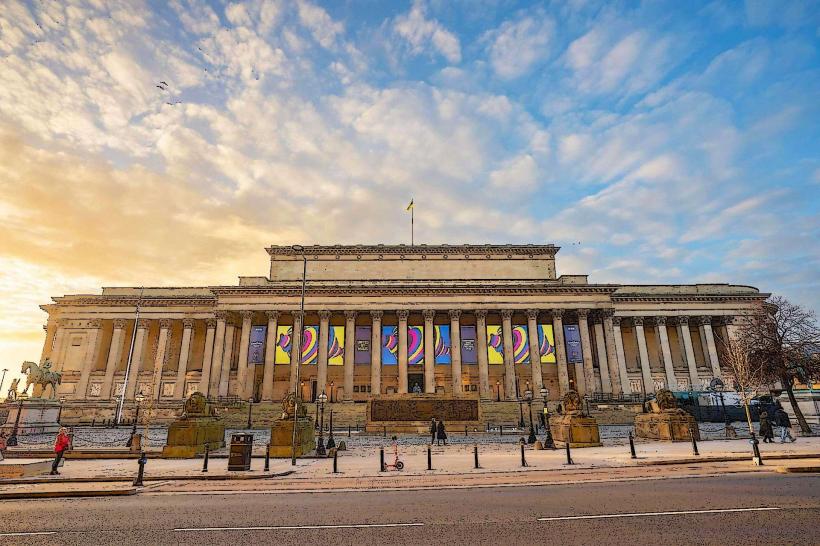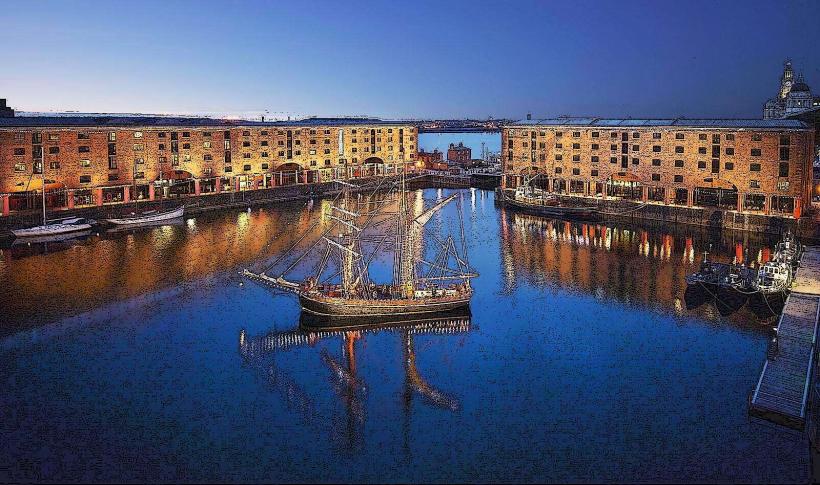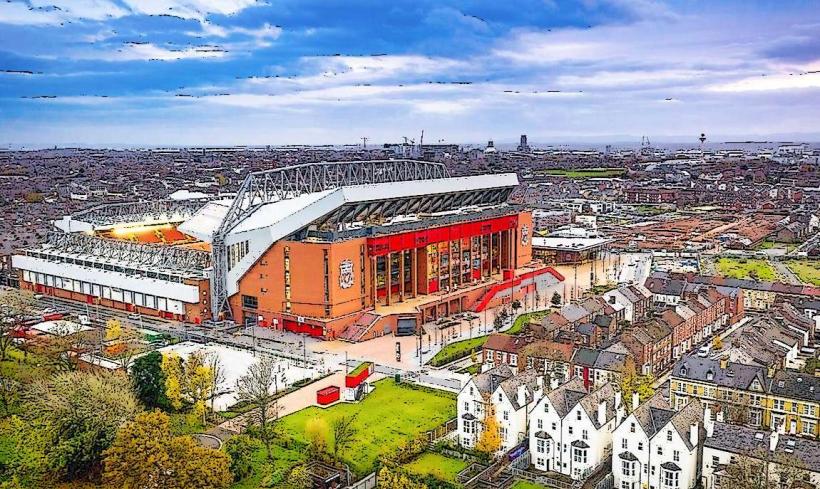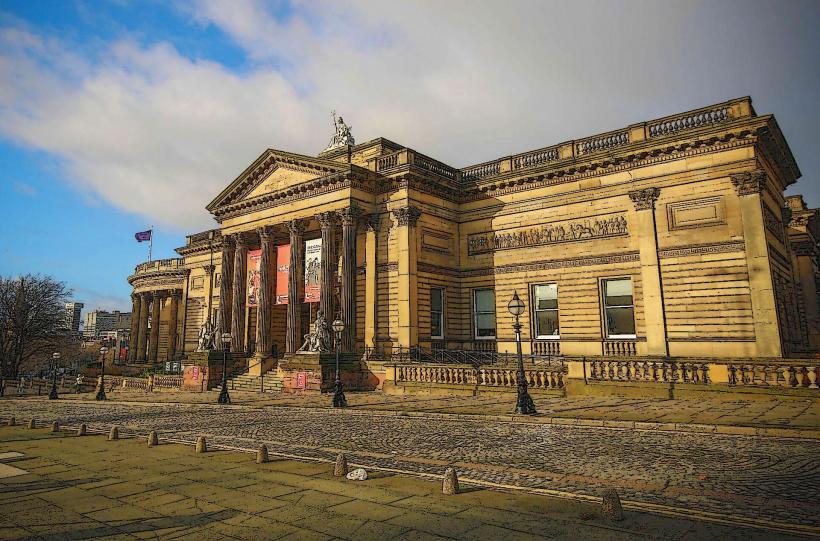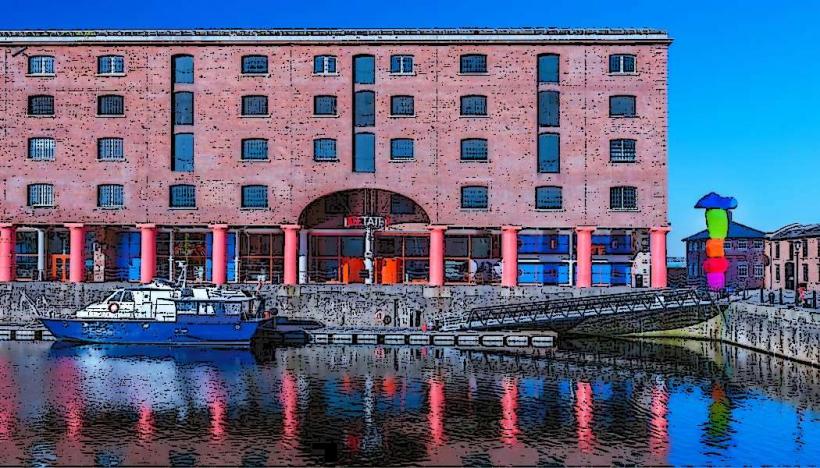Information
Landmark: Museum of LiverpoolCity: Liverpool
Country: United Kingdom
Continent: Europe
The Museum of Liverpool is a prominent museum located on the Pier Head in the heart of Liverpool, England. It is part of the city's National Museums Liverpool group and is dedicated to showcasing the history, culture, and heritage of Liverpool and its people. Opened in 2011, the museum offers a comprehensive look at the city’s unique identity, its role in global history, and its cultural contributions.
History and Origins
Establishment: The Museum of Liverpool was officially opened on July 19, 2011, and it became the first national museum in the UK dedicated to a regional city. The museum was developed as part of the wider regeneration of the Liverpool waterfront and was built in a modern and distinctive building designed by the architectural firm Ralph Appelbaum Associates.
Location: The museum’s location on the Pier Head places it in a historic and symbolic spot. The Pier Head is an iconic area of Liverpool, featuring landmarks such as the Royal Liver Building, the Port of Liverpool Building, and the Ferries across the Mersey. The museum’s placement allows visitors to connect the city’s rich maritime history with its modern identity, as the waterfront was central to Liverpool’s development as a port city.
Design: The museum’s design reflects Liverpool’s position as a global port city. Its striking building features bold geometric shapes, glass walls, and a large, open interior, making it one of the most distinctive and visually appealing museums in the UK. The design also reflects the museum’s theme of Liverpool’s diversity, incorporating contemporary and historical elements into its overall aesthetic.
Key Features and Exhibitions
Liverpool's History and People: The Museum of Liverpool offers a deep dive into the city’s social, cultural, and industrial history. The museum covers key themes such as Liverpool’s maritime heritage, the slave trade, the growth of the docks, and the city’s transformation from a small settlement into a thriving international port city.
The Liverpool Collections: The museum features a range of exhibits that showcase the history of the people of Liverpool, including personal stories, photographs, and artefacts from working-class communities to the city’s high society. There are extensive collections on Liverpool's immigrant communities, including those from the Caribbean and Ireland, as well as displays about the experiences of Liverpool’s Jewish community and the city’s involvement in global trade and commerce.
The Beatles and Popular Culture: As the birthplace of The Beatles, the Museum of Liverpool has a prominent section dedicated to the band’s impact on the city and the world. The museum showcases items related to Liverpool’s cultural contributions, including memorabilia from The Beatles, iconic photographs, and stories about the city’s vibrant music scene in the 1960s.
Maritime Heritage: Liverpool’s status as a port city is central to the museum’s displays, which explore the role of the docks and the shipping industry in the city’s history. Visitors can explore exhibitions on the Liverpool Slave Trade, the historic shipping routes, and the growth of the port as a critical hub for global trade. The museum also explores Liverpool’s important role in the transatlantic trade and the city’s naval connections.
Sports and the City: Another significant theme at the Museum of Liverpool is the city’s connection to sport. Liverpool is famous for its football culture, and the museum includes exhibits dedicated to Liverpool FC and Everton FC, detailing the city’s long-standing rivalry and passion for the game. It also features displays on Liverpool’s role in international sports, such as hosting the Rugby League World Cup and its involvement in boxing.
Changing Exhibitions: The museum hosts rotating exhibitions that reflect both local and national culture. Past exhibitions have explored a wide range of topics, from fashion and design to art and technology, ensuring that there is always something new for visitors to explore.
Children and Family-Friendly Displays: The Museum of Liverpool is designed to be accessible to all ages, and many of its exhibitions are family-friendly, with interactive displays that are particularly engaging for younger visitors. These include hands-on activities that allow children to learn about the city’s history through play, as well as visual exhibits that appeal to diverse age groups.
The Museum's Collections
The Museum of Liverpool houses more than 600,000 objects, making it one of the most important cultural institutions in the region. Some of the highlights of its collection include:
The Titanic Collection: Liverpool’s maritime connection to the Titanic is explored in the museum, given the city’s role as the home port of the ill-fated ship. The collection includes artefacts from the White Star Line, the company that owned the Titanic, and the museum explores the impact of the disaster on the city’s people.
Fashion and Textiles: A key aspect of the Museum of Liverpool’s collection includes displays of historic fashion and textiles, showcasing the city’s textile industry and its influence on fashion design. The collection offers insight into Liverpool’s fashion history and the city’s role in shaping British fashion in the 20th century.
Maritime Objects: The museum’s collection of maritime objects highlights the city’s legacy as a major port city and includes objects related to the shipping industry, including models of historic ships, maps, sailors’ tools, and captains’ logs.
Art and Photography: The museum also features collections of art and photography, including works by local artists, as well as historic photographs that document Liverpool’s changing landscape, particularly during the industrial revolution.
Visitor Experience
Interactive Exhibits: The museum is known for its interactive exhibits, which are designed to engage visitors of all ages. The exhibits are immersive, providing a detailed look at the history of Liverpool through a combination of photographs, artifacts, and multimedia displays.
Guided Tours and Events: The Museum of Liverpool offers a range of guided tours and educational programs, particularly for school groups. Additionally, the museum hosts special events and lectures that cover a range of topics related to the city’s history and culture.
Café and Shop: The museum also includes a café where visitors can relax and enjoy refreshments with views of the Mersey River. The museum shop sells a wide variety of local products, Liverpool FC merchandise, and Beatles-related items, as well as books, prints, and souvenirs.
Conclusion
The Museum of Liverpool is a must-visit destination for anyone interested in learning about the history, culture, and heritage of Liverpool. From its exhibitions on the city’s maritime past and musical legacy to its focus on local communities and the people who shaped Liverpool, the museum provides a comprehensive and engaging experience. With its contemporary design, wide-ranging exhibits, and family-friendly atmosphere, the Museum of Liverpool offers a fascinating journey through the city’s unique story.

